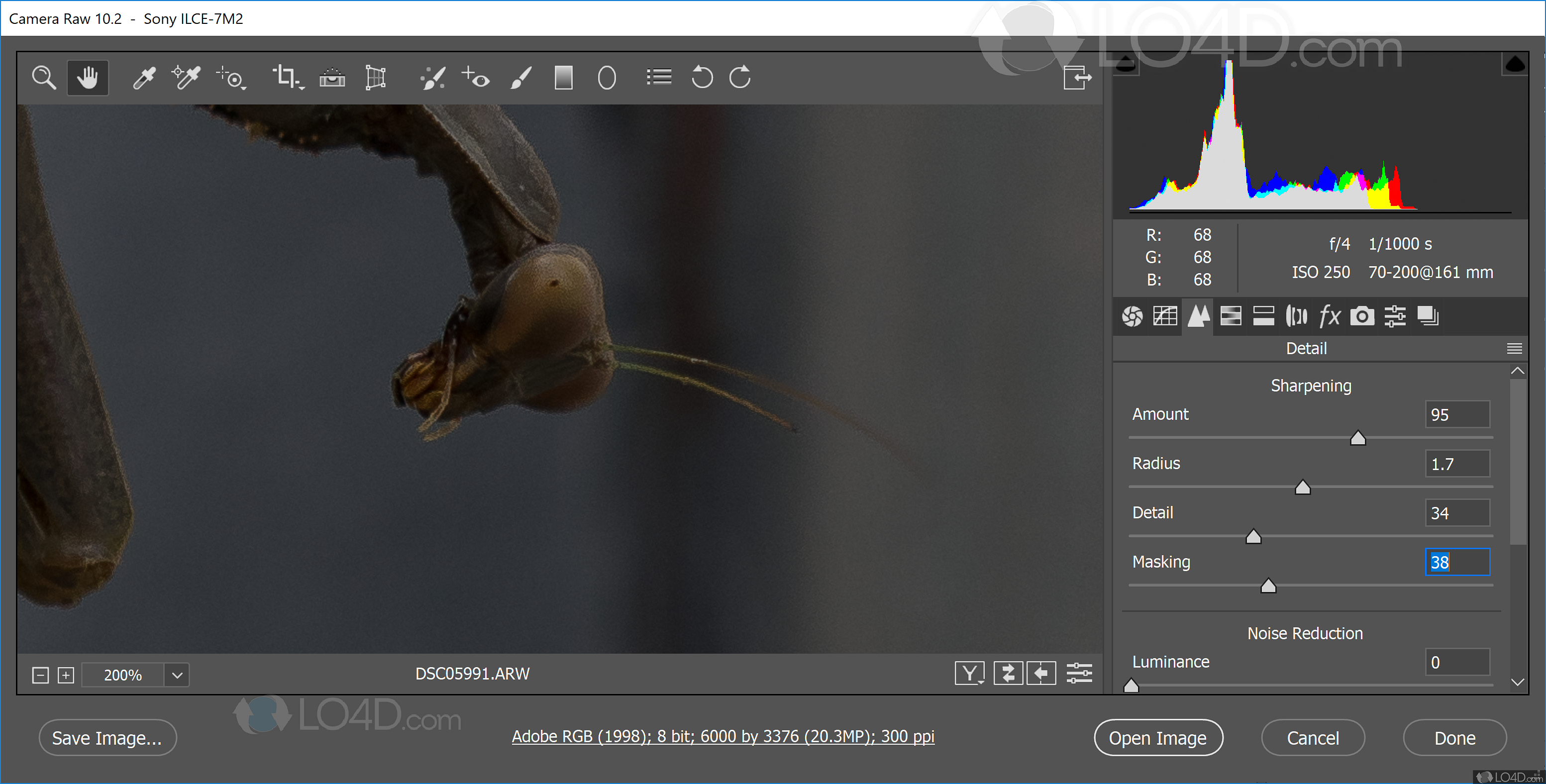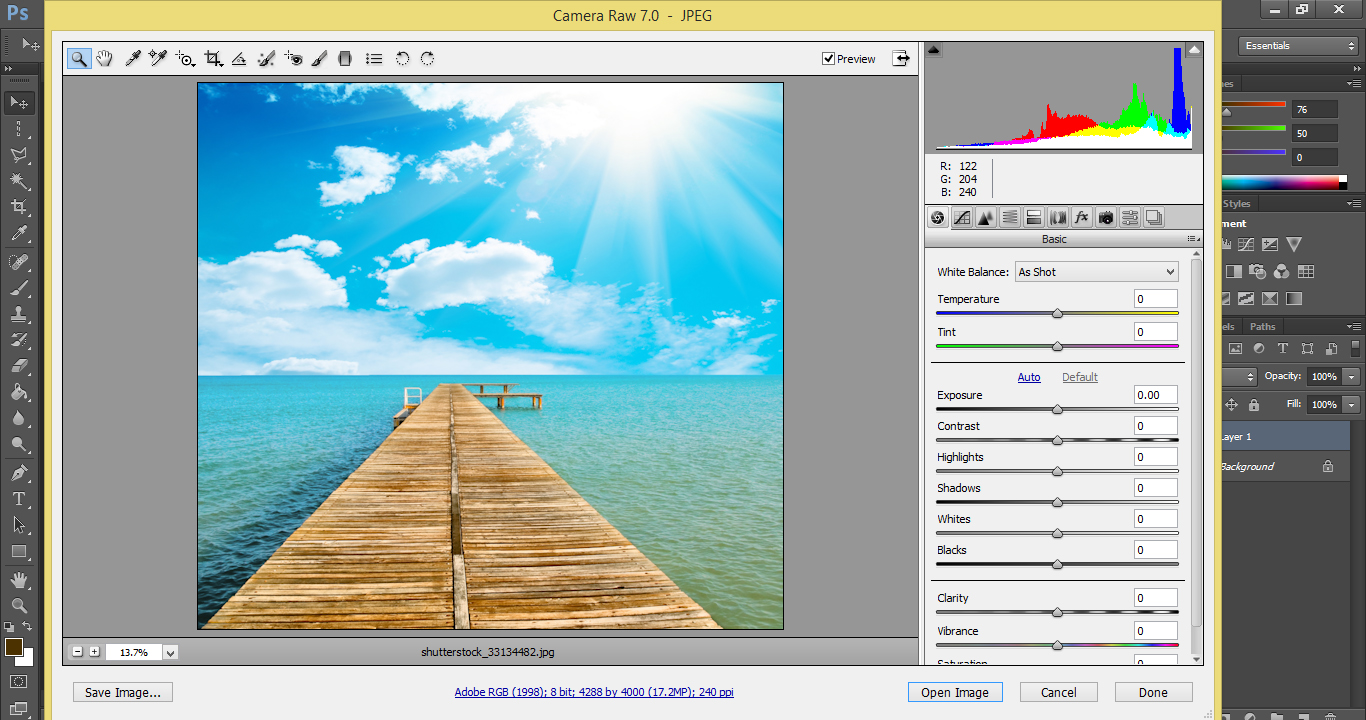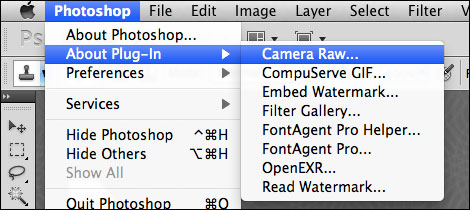
Just give me the untouched RAW photo and I'll add all that stuff myself in Camera Raw. However, when you switch your camera to shoot in RAW mode, you're telling the camera to turn off that sharpening, turn off the contrast, don't apply a color profile, and turn off any picture styles you had turned on in the camera (like Vivid or Landscape). The reason is this: When you shoot in JPEG mode on your camera, your settings are "baked in," meaning things such as in-camera sharpening, contrast, picture styles, white balance presets, and color profiles (like Adobe RGB or sRGB) are all applied to the image in the camera. Yup, Shade, Cloudy, Fluorescent, Daylight, and so on are all gone. When you shoot in JPEG or TIFF mode and you click on the White Balance preset pop-up menu in the Basic panel, you'll notice that the presets are gone. So what are the differences in editing? Almost 99% of the time, you wouldn't even really know whether you're editing a RAW, JPEG, or TIFF image in Camera Raw because all the sliders look and operate the same way, but there are three things that are distinctly different that you'll run into: Anyway, I wanted to get that out of the way up front RAW images give you more "headroom" (room to tweak without visible damage) than JPEGs or TIFFs, but quite honestly, most folks will never need this headroom because today's cameras do a pretty amazing job of getting accurate exposures in most situations. Now, if you're having to shoot in RAW because you know your photos are going to be so messed up that you're going to need more than just minor tweaks, then learning Camera Raw might not be the best use of your time (you need to work on getting consistently proper exposures in your camera). What that means to you is if you have a photo that needs a lot of "fixing" in Camera Raw (big Exposure adjustments, for example), then you'll be glad you shot in RAW because making big adjustments does less visible damage to a RAW file than it does a JPEG file (since a 16-bit file has way more data-if some pixels die in the process, there are plenty others there to make up for it). I'm sure you've heard that there are advantages to shooting and editing RAW images, and one of the biggest advantages is that RAW files open as 16-bit images rather than the regular 8-bit images we work with most of the time in Photoshop.

The Differences between Editing RAW and JPEG Images This saves you from having to manually choose Camera Raw from the pop-up menu. If you change your settings in Photoshop to automatically open JPEGs and TIFFs in Camera Raw, when you go to open an individual JPEG or TIFF from the File menu, the Format pop-up menu in the Open dialog automatically changes to Camera Raw when you click on a JPEG or TIFF file. At the bottom of the Preferences dialog, where it says JPEG and TIFF Handling, choose Automatically Open All Supported JPEGs and Automatically Open all Supported TIFFs.


Go to Photoshop (PC: Edit)>Preferences>Camera Raw. If you decide you always want JPEGs and TIFFs to open in Camera Raw (I sure do), you need to set that as a preference. Photoshop opens your image in Camera Raw (take a look at the top of the window where it shows the file name-you can see that even though the image is open in Camera Raw, it's a JPEG image).

Click on it, then from the Format pop-up menu at the bottom of the Open dialog, choose Camera Raw, and click Open. If you want to open a single JPEG or TIFF image that's on your computer, go under the File menu in Photoshop, choose Open, then find the JPEG or TIFF image on your computer that you want to open. We'll then take a look at some of the minor differences between editing a JPEG or TIFF file versus a RAW file.
Photoshop cs6 camera raw update how to#
So I thought I'd show you how to do just that, because it's not really obvious, and there are a couple of different ways to do it (and I think learning Camera Raw is the easiest and certainly fastest way to make your photos look the way you want them to look). This really surprises a lot of people, but you can shoot in JPEG or TIFF modes on your camera and still use Camera Raw just like you would with any RAW photo.


 0 kommentar(er)
0 kommentar(er)
